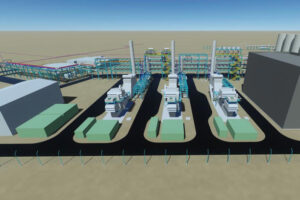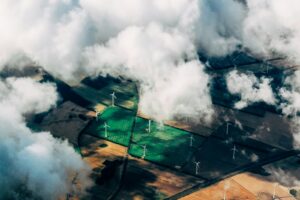Solar panels on farmland could meet global energy demands
Installing solar panels on farmland is the best way to maximise their productivity, a new study has found.
The study, published in the journal Scientific Reports, found that global electric energy demands could be met if just 1% of agricultural land was converted to solar panels.
The findings also bring into question the current common practice of constructing large arrays of solar panels in deserts.
Chad Higgins, associate professor in Oregon State University (OSU)’s College of Agricultural Sciences and corresponding author of the study, said: ‘Our results indicate that there’s a huge potential for solar and agriculture to work together to provide reliable energy.
‘There’s an old adage that agriculture can overproduce anything. That’s what we found in electricity, too. It turns out that 8,000 years ago, farmers found the best places to harvest solar energy on Earth.’
The research team led by Oregon State University analysed power production data collected by a Tesla solar electric array installed on farmland owned by the university.
They combined the Tesla information with data from microclimate research stations installed at the array, which recorded variables like mean air temperature, wind speed and direction and incoming solar energy.
Based on those results, the university created a model for photovoltaic efficiency based on air temperature, wind speed and relative humidity.
‘We found that when it’s cool outside the efficiency gets better,’ Higgins said. ‘If it’s hot the efficiency gets worse. When it is dead calm the efficiency is worse, but some wind makes it better.
‘As the conditions became more humid, the panels did worse. Solar panels are just like people and the weather, they are happier when it’s cool and breezy and dry.’
The researchers then used global satellite imagery to apply the model worldwide, crossing 17 classes of land cover including croplands, mixed forests, urban and savanna.
Croplands were found to be the most productive places to place a solar panel, while snowy or icy environments turned out to be least productive.
The scientists then re-evaluated their model to assess agrivoltaics’ potential to meet the projected global electric demand determined by the World Bank.
The findings follow previous research by OSU that found that placing solar panels on agricultural fields could improve crop yield.
Solar energy is the fastest-growing source of power worldwide and could become the world’s largest electricity source by 2050, according to the International Energy Agency.
Photo Credit – Pixabay















